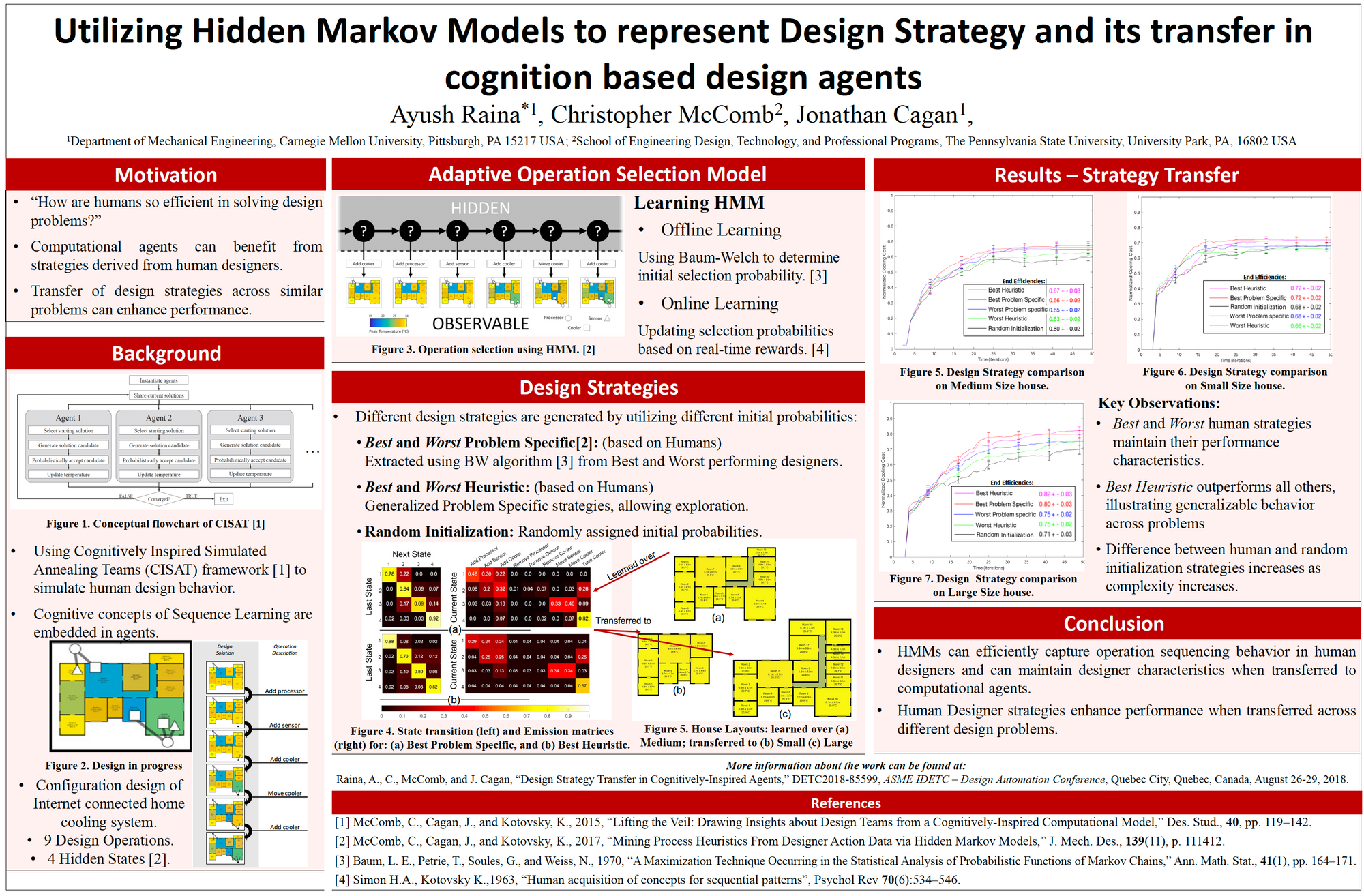Ayush Raina, Christopher McComb, Jonathan Cagan
Abstract:
Solving any design problem involves planning and strategizing, where intermediate processes are identified and then sequenced. This is an abstract skill that designers learn over time and then use across similar problems. However, this transfer of strategies in design has not been effectively modeled or leveraged within computational agents. This note presents an approach to represent design strategies using a probabilistic model. The model provides a mechanism to generate new designs based on certain design strategies while solving configuration design tasks in a sequential manner. This work also demonstrates that this probabilistic representation can be used to transfer strategies from human designers to computational design agents in a way that is general and useful. This transfer-driven approach opens up the possibility of identifying high-performing behavior in human designers and using it to guide computational design agents. Finally, a quintessential behavior of transfer learning is illustrated by agents as transferring design strategies across different problems led to an improvement in agent performance. The work presented in this study leverages the Cognitively Inspired Simulated Annealing Teams (CISAT) framework, an agent-based model that has been shown to mimic human problem-solving in configuration design problems.
Keywords:
▶️ Probabilistic Models ▶️ Generative Design ▶️ Transfer Learning ▶️ Cognitive Agents
